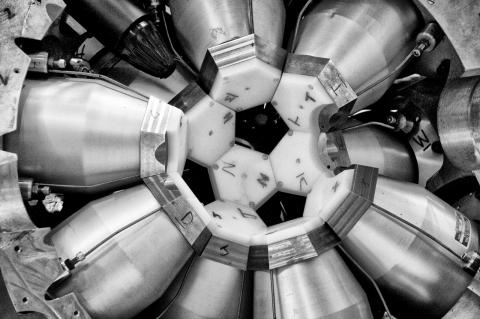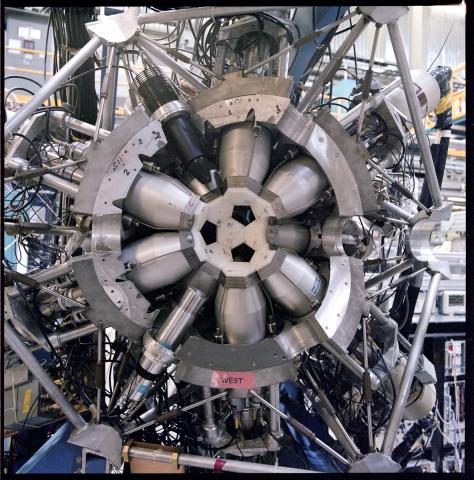

One of the surprising characteristics of atomic nuclei is that the same nucleus can assume different shapes such as spherical (soccer ball), prolate (American football), or oblate (flattened sphere) and the energies associated with these different shapes are remarkably similar. Such behaviour is common in molecules; for example, the odors of oranges and lemons are attributed to different shapes of the molecule limonene. Nuclei with these properties are said to exhibit "shape coexistence" and are typically found near the major shells of nucleons (neutrons or protons), which are analogous to the noble gases that occur at major electron shells. Famous examples of shape coexistence include oxygen (with proton number Z=8), calcium (Z=20), nickel (Z=28), cadmium or tin nuclei (Z=50), and the polonium or lead nuclei (Z=82) –- all located at the major proton shells which are indicated in the brackets. Unfortunately, evidence of shape coexistence is typically elusive or indirect, and hence often circumstantial, so firm identification demands high-sensitivity nuclear spectroscopic measurements.
In work performed with the 8π spectrometer at TRIUMF by a collaboration of scientists from Canadian and American universities and their TRIUMF colleagues, shape coexistence has been established in Zr-94 (with Z=40), a nucleus which is not near a closed nucleon shell. This work provides the first direct evidence for the effects of subshells of nucleons and leads to the conclusion that shape coexistence may be a much more widely occurring phenomenon than previously believed because subshell structure varies more widely than shell structure (there are typically two to four subshell closures for each major shell closure).
Specifically, it was the measurement of weak gamma-ray decays following the beta decay of the radionuclide Y-94 into levels of stable Zr-94 with the TRIUMF 8π array of gamma-ray detectors that provided the key data. The radioactive beam of Y-94 was produced by bombarding a UC target with 10 microamps of 500 MeV protons at the TRIUMF-ISAC facility and then delivered to the 8π spectrometer for the measurement. When this new information on the branching ratio between nuclear transitions in Zr-94 was combined with recent nuclear level lifetime data from measurements at the University of Kentucky, it was possible to determine gamma-ray transition rates. The key result is that while some transitions had a normal transition rate (associated with a near-spherical shape), some of these rates were highly enhanced (associated with a strongly deformed shape), i.e., direct evidence for shape coexistence and the essential quantity in providing a consistent picture of Zr-94. Moreover, this discovery illustrates how such (perhaps very common) structures may have been overlooked in the past with less sensitive experiments and points to new investigations to be performed at TRIUMF.
The details of this work are provided in Physical Review Letters 110, 022504 (2013).
---by Steve Yates (Professor, University of Kentucky), Paul Garrett (Professor, University of Guelph) and Adam Garnsworthy (Research Scientist, TRIUMF)
NOTE: Photograh of 8pi detector by M. Enriquez.
